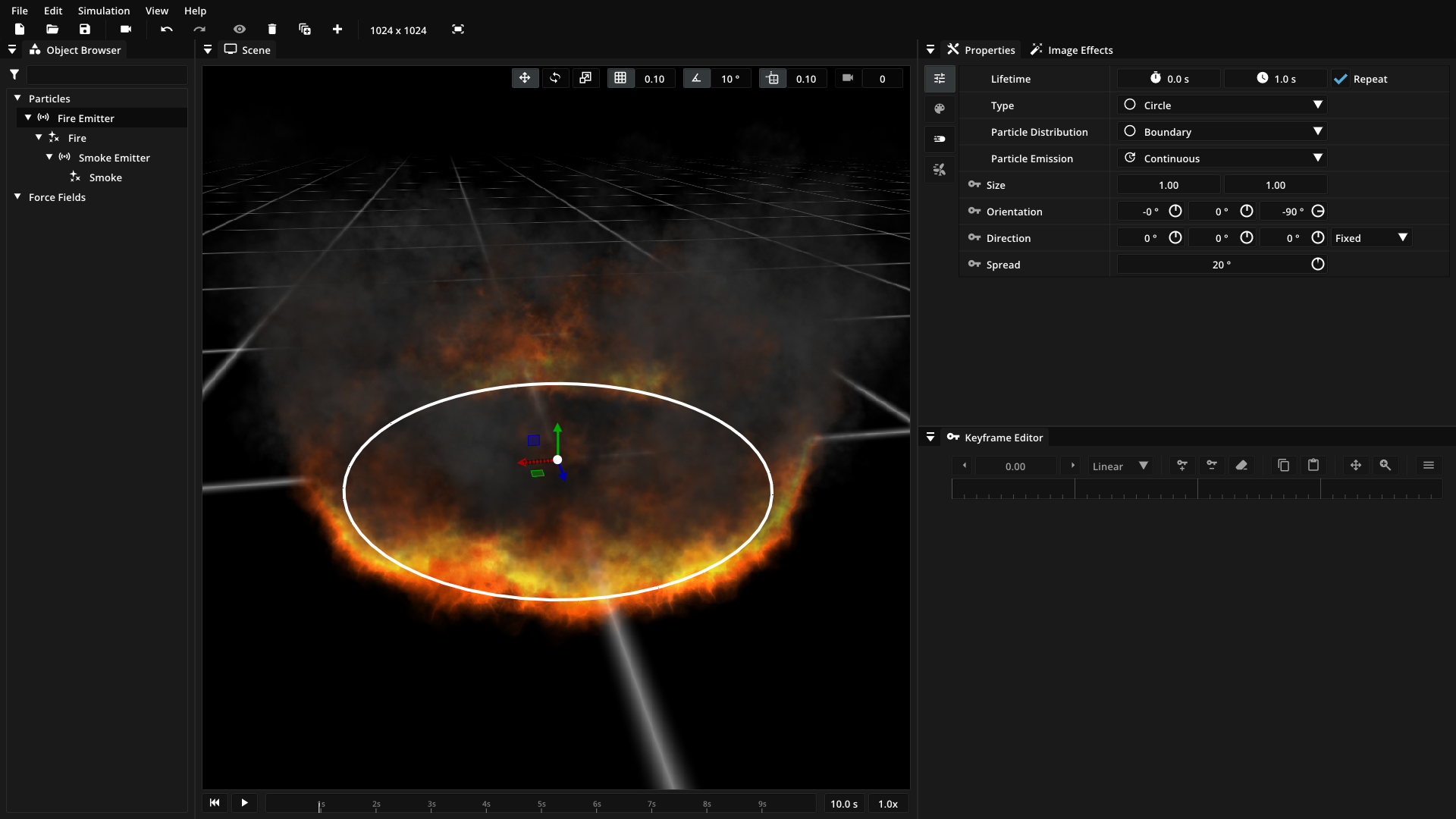Particle Emitters¶
Particle emitters continuously spawn new particles of assigned particle types in a defined area. They also define in which direction particles go initially.

Emitter shapes¶
Particle emitters generate particles inside a defined area. This area can have different shapes.
- Point
The emitter generates particles at a single point.
- Line
Particles are emitted on a straight line.
- Circle
Particles are emitted inside a circular or elliptical shape.
- Rectangle
Particles are emitted inside a rectangle.
- Path
Particles are emitted on a custom path consisting of connected line segments. Define the path by adding line segments in the scene window with Shift+LMB.
- Sphere
Particles are emitted inside a sphere or ellipsoid. Only for 3D effects.
- Cube
Particles are emitted inside a cube. Only for 3D effects.
- Cylinder
Particles are emitted inside a cylinder. Only for 3D effects.
Distribution modes¶
When spawning particles inside the emitter shape, particle emitters can use different techniques to determine the exact points where particles are spawned. For example, you may want to spawn particles near the edge of the shape or on in a grid-like pattern.
- Uniform
Particles are spawned at randomly generated locations (uniform distribution) inside the emitter area.
- Center
Particles are created mostly around the center and less at the boundary.
- Hole
More particles spawn near the emitter boundary and less in the center.
- Boundary
Particles are created only on the emitter boundary.
- Grid (random)
Particles spawn at random points of a grid.
- Grid (ordered)
Particles are created on points in a grid, one grid point after the other.
Emission modes¶
The emission mode of particle emitters controls when particles are created during the lifetime of the emitter.
- Continuous
The emitter continuously spawns particles throughout its lifetime.
- Burst (start)
The emitter instantiates all particles immediately after being created.
- Burst (end)
Particles are spawned at the end of the emitter lifetime, or - if the emitter is a sub-emitter - when particles of the parent emitter reach the end of their lifetime.
Direction modes¶
When a particle is created by the particle emitter, it decides in which direction to emit the particle based on the specified direction and the given direction mode.
- Fixed
Particles shoot off in a common direction.
- Outwards
Particles move away from the emitter.
- Inwards
Particles move towards the emitter’s center.
- Inherit
Particles move along the direction of the parent particle or emitter.
- Inherit (inverse)
Particles move against the direction of the parent particle or emitter.
Properties¶
The following properties can be adjusted in the property window to define how emitters create particles.
General¶
Property |
Description |
|---|---|
Primary |
If disabled, the emitter generates particles as sub-particles of other particles. Its associated particles types need to be sub-types of other particle types. |
Particles |
Types of particles the emitter generates during its lifetime. Use right-click to add and remove particle types. |
Shape |
Shape of the emitter area. |
Particle distribution |
How particles are distributed inside the emitter area. |
Particle emission |
When particles are emitted during the emitter’s lifetime. |
Direction |
Direction in which particles move when spawned, in degrees. For 3D effects, the direction is composed of roll, yaw and pitch. |
Spread |
How much the emitter varies the spawn direction for particles, in degrees. A spread of 0° means that particles only move in the specified direction, while 360° leads to particles shooting off in all directions. |